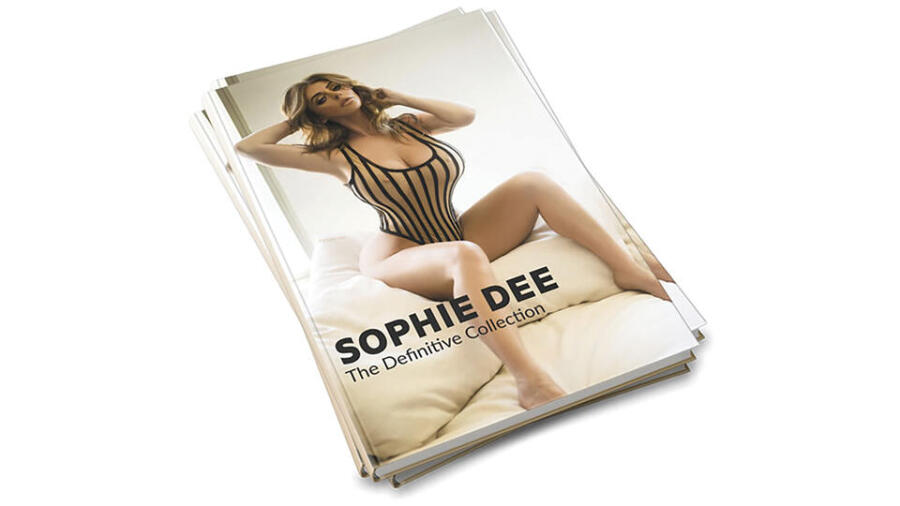What’s the difference between a coffee table book and a collectible magazine? Yes, I know one is a book and the other is a magazine. But there are some other big differences we need to get out of the way, so we can jump into the do’s and don’ts of making and selling them.
By the way, don’t let the word “collectible” throw you off. It’s a fancy word we use to add value and prestige to a project. A coffee table book is just as much a collectible as a magazine, baseball card or bowling ball. If we say it’s a collectible, then voila, it’s a collectible! Now you can add 30% to the price and be happy — unless you’re the buyer, but that’s a whole other article.
Always try to include an article or story or quotes that come directly from you; that goes for magazines, coffee table books, calendars and yes, even branded merch.
Obviously, a coffee table book is a hardcover item while a magazine is a softcover. But there are other differences. A coffee table book is meant to be “viewed,” while a magazine is meant to be read. A magazine offers varied content like articles, photos, opinion pieces and maybe even advertising, while a coffee table book is usually 90% photography. Finally, a coffee table book has a higher retail value, unless of course you’ve already learned the value of the word “collectible.”
THE SEASONAL NATURE OF COLLECTIBLES
Anybody that is familiar with me or my company knows that we design, print and distribute model calendars every year. The thing is, after January ends, the calendar market tends to go to sleep. But don’t get me wrong! We’re still actively selling “collectible” calendars even from way back in 2019 — just ask Sophie Dee or Kendra Sunderland — but for the most part, you’re going to sell the bulk of your calendars from October through January.
So, we wanted to develop a model-specific product that could fill the void between February and October and hit the same price point and margin of profit for the models we work with. We ran a pilot program last year with just two coffee table books, and sales were through the roof. That shows us that the major differences between calendars and books are shelf life and the amount of content needed.
Coffee table books sell all year long and fill the February-to-October calendar void. This year, we’ve added collectible magazines to the mix to offer an additional option. And guess what? People are ordering the 2022 model calendars already as well as the coffee table books and collectible magazines, so we’ve really just created a bundled holiday product.
PREPPING MATERIALS FOR COFFEE TABLE BOOKS VS. CALENDARS
It doesn’t take a rocket scientist to know what goes into a calendar. Take 12 to 15 high-resolution photos, crop them into squares, arrange them by month and you have a calendar. Easy peasy, at least when it comes to the construction of a calendar. The marketing is not so easy peasy — again, a whole other article.
A coffee table book is something else entirely. The first thing you need to decide on is size. Coffee table books can be 5 by 7, 8.5 by 11, 11 by 17 or any other sizes. We typically run 8.5 by 11 simply because the printing costs work out better.
From there, it’s about content. For our purposes, we create model-centric coffee table books, with the entire book featuring photos of one model. As far as page layout, you can feature one 8.5 by 11 photo on each page or have four or six different page templates, so the entire book doesn’t have the same look page after page. It’s definitely better to have alternate page templates.
What about color photos? Or strictly black and white content? Why not both? Sure, you can mix it up; it makes it interesting for sure.
And then there is the number of pages — this is where things get unwieldy. Obviously, you must have an even number of pages, but then you need to determine the amount of content, the number of page templates and what your print cost is going to be. More pages means more content and higher printing cost. But, I should mention that a 50-page coffee table book with a hard cover looks and feels really thin. So my recommendation here is a minimum of 80 pages, preferably 120. A 120- page coffee table book feels rich. It feels like it’s worth $79.95. Or $119.95 if it is a “collectible” — see how that magic word works?
Don’t feel like you have to go out and shoot 120 new photos either; that’s just wild. Instead, include your most popular social media pics, for example, and add them to your book. Your fans will actually appreciate the larger view.
WHAT ABOUT PRODUCING A COLLECTIBLE MAGAZINE?
Besides the binding and cover differences, the biggest difference is the varying content. Where a coffee table book is typically all photography, a magazine will have photo spreads broken up by articles about you, perhaps some interviews, interesting fan stories and advertisements for your private content channels or branded merch stores. You could even include discount coupons for your calendar or coffee table book.
Most magazines are going to measure in at 8.5 by 11 and if you stay under 70 pages you can get away with saddle stitching, which is staples, like the binding of People magazine. When you go over 70 pages, you need what’s called perfect bound, which is a thicker, glue bonding, like Cosmo or Good Housekeeping. I’ll be honest with you: the perfect bound makes for an impressive product. Staples don’t really say “collectible.”
Once you've decided on a page count, start with the article content, then fill in the blanks with photos. Here’s the thing: your fans enjoy the visuals, but they really want to know you, so articles are a 198% better way to connect. Always try to include an article or story or quotes that come directly from you; that goes for magazines, coffee table books, calendars and yes, even branded merch. Fans want to know you’re not just licensing your photos and name to some marketing company.
Based on what we’ve seen so far this year, my recommendation would be magazines over coffee table books. Why? Economics. Magazines cost less to produce and you can get more content into a magazine. Further, you’re not automatically locked into some 80 pages.
Oh, and now is the perfect time to start planning your Valentine’s Day magazine.
Danny Ferretti has over 25 years in the marketing industry and is the co-founder of GFE Model Services and FanGear.vip, a company that specializes in collectible calendars, branded merchandise and other model-centric printed products. For more information, contact sales@gfemodelservices.com or visit GFEModelServices.com.








